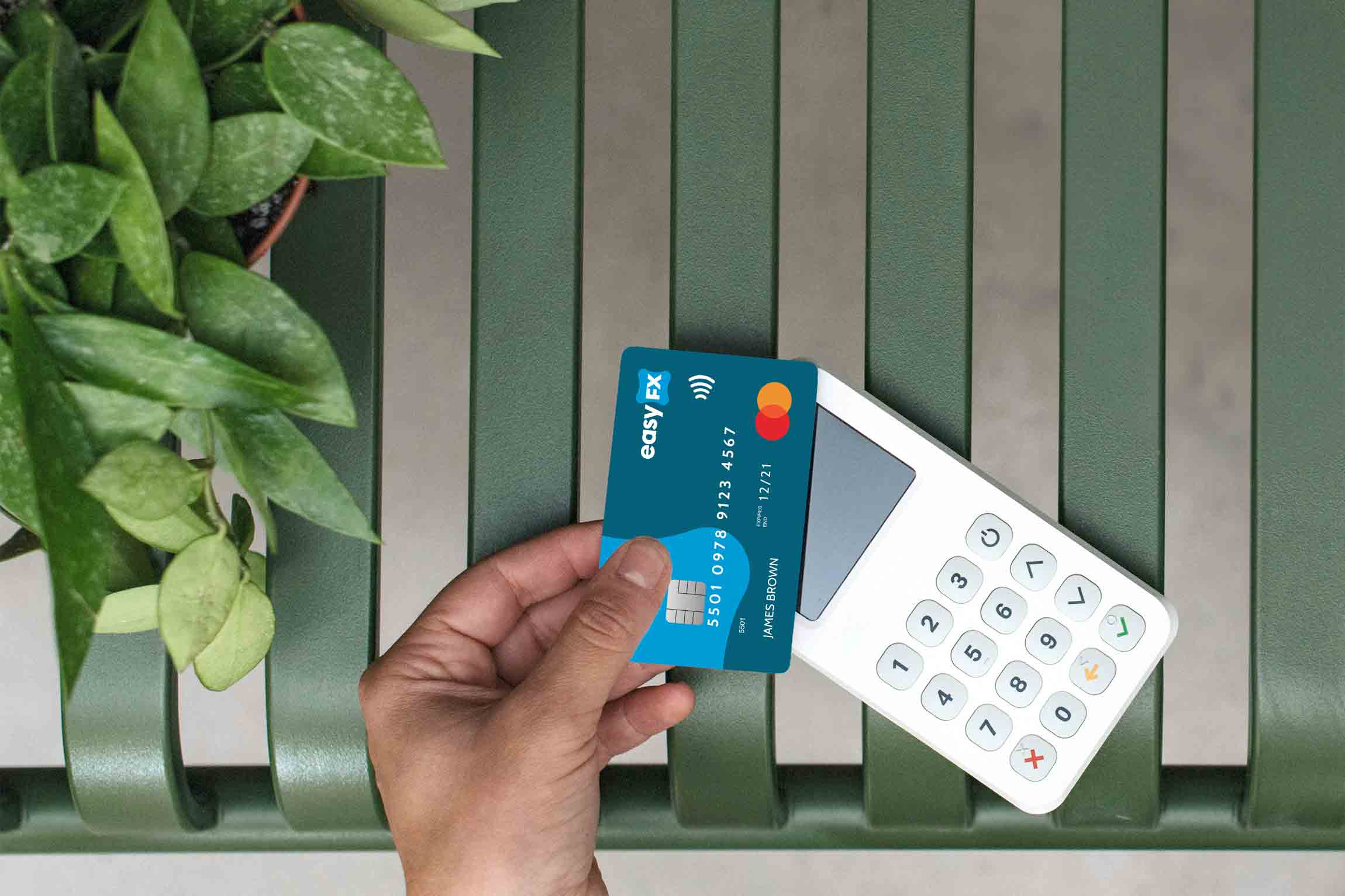SWIFT transfers explained the Easy way
In the fast-paced world of international finance, a swift and secure method of transferring money across borders is essential. SWIFT transfer, also known as the Society for Worldwide Interbank Financial Telecommunication (SWIFT), is a global network that facilitates these cross-border transactions. But what exactly is SWIFT transfer, and why is it so important? Let's explore the world of SWIFT transfers and understand how they work.
Table of contents:
- The importance of SWIFT transfers
- How SWIFT payments work
- What is a SWIFT code?
- How long does a SWIFT transfer take?
- Benefits of using SWIFT transfers
- SWIFT payments vs. other payment methods
- SWIFT transfer process step by step
- Common uses of SWIFT transfers
- SWIFT transfer fees and charges
- SWIFT transfer security
- SWIFT transfer limitations
- How to initiate a SWIFT transfer?
- What is an IBAN number?
- SWIFT transfer around the world
- Which countries use the SWIFT payment network?
- SWIFT transfer for businesses
- SWIFT transfer in the digital age
The importance of SWIFT transfers
SWIFT transfers play a pivotal role in the global economy. They enable the seamless transfer of funds between financial institutions in different countries. Whether it's for individuals sending money to family abroad or multinational corporations conducting business transactions, SWIFT offers a secure and efficient means of moving funds across borders.
How do SWIFT payments work?
At its core, SWIFT transfers operate as a messaging system. When you initiate a SWIFT transaction, your bank sends a secure message through the SWIFT network to the recipient's bank. This message, also called SWIFT code, contains all the necessary information to complete the transfer, including account details and the amount to be transferred. The recipient's bank then processes the message and ensures the funds are credited to the intended account.
What is a SWIFT Code?
A distinctive SWIFT code consists of either 8 or 11 characters and is known by various names, including:
- Bank Identifier Code (BIC)
- SWIFT ID
- ISO9362
This alphanumeric code is integral to the efficiency and accuracy of cross-border financial transactions.
How long does a SWIFT transfer take?
SWIFT transfers usually take 1 to 4 working days. The exact time can vary depending on where you're sending it, time zone differences, and various banking regulations. Keep in mind that SWIFT transfers aren't instant. Your money has to go through security checks to prevent fraud and money laundering, which can slow things down.
Sometimes, if your bank isn't directly connected to the recipient's bank, your money may go through an intermediary bank, making the process take a bit longer.
Benefits of using SWIFT transfers
One of the primary benefits of SWIFT payments is their global reach. Regardless of the countries involved, SWIFT can connect banks worldwide. This extensive network ensures that your money reaches its destination securely and on time. Additionally, SWIFT transfers are known for their reliability and security.
SWIFT payments vs. other payment methods
Comparing SWIFT payments to other payment methods like wire transfers or online payment platforms is essential to understanding their advantages and disadvantages. SWIFT transfers are typically used for larger international transactions, while other methods may be suitable for smaller domestic payments.
A few main advantages of SWIFT payments:
-
Accountability: SWIFT simplifies tracking payments between banks,
so you always know when your payment is sent and received.
-
Accessibility: In a global world, communication can be tricky, but
not with SWIFT. It makes cross-border connections smooth and
straightforward.
-
Transparency: SWIFT provides crystal-clear information about how
much your transaction will cost. No hidden fees, just transparency.
- Popularity: SWIFT is your go-to for sending payments worldwide, supporting 160 currencies and over 1,200 currency pairs. It’s a popular choice for a reason.
SWIFT transfer process step-by-step
- Initiation: The sender instructs their bank to make a SWIFT
transfer.
-
Message Creation: The sender's bank generates a secure message
containing all the transfer details.
-
Message Transmission: The message is sent through the SWIFT
network.
-
Message Receipt: The recipient's bank receives the message.
- Funds Transfer: The recipient's bank processes the message and credits the recipient's account.
Common uses of SWIFT transfers
SWIFT transfers are versatile and can be used for various purposes:
-
Cross-Border Transfers: SWIFT facilitates secure and efficient
cross-border money transfers between banks, allowing individuals and
businesses to send and receive funds internationally.
-
Foreign Exchange Transactions: Financial institutions use SWIFT
to execute and settle foreign exchange transactions, enabling the
conversion of one currency to another as part of international trade or
investment activities.
-
Trade Finance: SWIFT is widely employed in trade finance for the
settlement of payments related to international trade transactions. It
helps streamline the financial aspects of importing and exporting goods.
-
Securities Transactions: SWIFT is instrumental in the processing
and settlement of securities transactions, providing a standardised and
secure communication platform for financial institutions involved in the
buying and selling of securities.
-
Corporate Payments: Large corporations and multinational
companies use SWIFT for making and receiving payments globally. This
includes salary payments, vendor payments, and other corporate financial
transactions.
-
Interbank Communication: SWIFT serves as a messaging system for
interbank communication, allowing financial institutions to exchange
information securely and efficiently, enhancing collaboration and
coordination.
-
Cash Management: SWIFT supports cash management by facilitating
the movement of funds between accounts held by financial institutions,
assisting in liquidity management and optimising cash positions.
- Payment Confirmation: SWIFT messages provide a standardised way for banks to confirm payment instructions, ensuring transparency and reducing the risk of errors in financial transactions.
SWIFT transfer fees and charges
While SWIFT transfers offer advantages in terms of security and reliability,
they are not without costs. Banks typically charge fees for SWIFT Transfers,
which can vary depending on the amount, currency exchange rates, and the
banks involved. In the UK, the major banks have a variety of charges for
these transactions, which can be a bit puzzling.
There are two common
types of fees: a transfer fee and recipient fee. These fees are usually
fixed for each SWIFT transfer. Let’s take a look at the fees charged by the
UK’s top four banks:
-
Barclays: No online fee, but £25 if you use a branch. They also
add on a £6 recipient fee.
-
Lloyds: A flat rate of £9.50, whether you do it online or at a
branch, and a £12 recipient fee.
-
HSBC: They charge £4 online or £9 in-branch, plus an £8 recipient
fee.
- Natwest: £15 for transfers under £5,000 or 0.3% (capped at £40), with a £7.50 recipient fee.
Be aware that there may be additional correspondent bank fees if an intermediary bank is involved in your money’s journey. Some banks offer the option of speeding up your payment, but they may charge a priority payment fee. If you’d rather avoid these fees altogether, going outside your bank is the only way to go.
Alternatively, you can consider money transfer companies like EasyFX. They specialise in travel money cards and international money transfers, offering the best rates with no hidden fees. Trusted by over 40,000 clients, EasyFX ensures transparency and an exceptional customer experience.
How secure are SWIFT transfers?
SWIFT transfers are a trusted and secure method for moving money internationally. This well-established payment network has been in operation for over four decades and is the choice for nearly half of all global cross-border payments.
It’s important to understand that SWIFT serves as a secure means of communication for transferring funds between accounts, but it doesn’t actually manage the money itself. This responsibility lies with your bank or the money transfer company you choose.
For added peace of mind, it's advisable to work with a company authorised by the Financial Conduct Authority (FCA) such as EasyFX. This authorisation ensures that the bank or money transfer company maintains a dedicated safeguarded bank account solely for customer transactions, which is a crucial layer of protection for your funds.
To verify if a company is FCA Authorised, simply input their name into the
Financial Services Register.
SWIFT transfer limitations
Despite its many benefits, SWIFT transfer has some limitations. The process can be slower compared to modern digital payment methods, and the fees can be relatively high for smaller transfers. It's essential to consider these factors when choosing the right payment method.
How to initiate a SWIFT transfer?
To initiate a SWIFT Transfer, you will need to contact your bank or financial institution. They will guide you through the process, including the information required to complete the transfer.
To send money overseas with SWIFT, you’ll need these details:
- Receiver’s name.
- Where they live.
- Bank’s name and address.
- The bank’s SWIFT code (also called BIC).
- Receiver’s account number or IBAN (International Bank Account Number).
The SWIFT code is like the bank’s ID, while IBAN is a longer code for the bank account.
What is an IBAN number?
An IBAN, which stands for International Bank Account Number, is really important for handling money from different countries. It's not there to replace your regular sort code and account number; instead, it's like an extra code made up of letters and numbers. This code helps banks in other countries figure out which account is yours.
Here's an example: If you have an account in the United Kingdom, your IBAN might look something like this: GB29 BUKB 6016 1331 9268 19.
In this example:
- GB: Country code for the United Kingdom
- 29: Check digits for validation
- BUKB: Bank code (Barclays Bank)
- 60161331926819: Account number (customer's account at the Barclays Bank)
This special code makes sure your money goes to the right place when you’re dealing with cross-border transactions.
Which countries use the SWIFT transfer/payment network?
SWIFT is truly a global phenomenon. It connects banks and financial institutions in more than 200 countries, making it one of the most widely used international payment systems.
A considerable portion of global high-value cross-border payments utilises the Swift network. Swift has successfully interconnected over 11,000 financial institutions across more than 200 countries and territories. These institutions engage in an extensive exchange of messages, with an average exceeding 32 million messages per day—a significant leap from the comparatively lower average of 2.4 million daily messages noted in earlier years.
SWIFT transfers for businesses
Businesses frequently rely on SWIFT transfers for international trade and financial transactions. The system offers the security and reliability needed for large-scale cross-border dealings.
SWIFT transfers in the digital age
As technology continues to advance, SWIFT has also evolved. Digital innovations have made the process more efficient, reducing the time it takes for funds to reach their destination.
A Summary of SWIFT transfers:
To summarise:
- SWIFT money transfers are a safe and reliable payment system.
- To initiate a SWIFT transfer, choose a bank or a specialised money transfer service.
- International SWIFT payments usually take 1-4 working days to complete.
- Keep in mind that banks tend to charge more for SWIFT transfers compared to money transfer companies. For added peace of mind and financial security, it's best to choose a company authorised by the FCA.
Your travel money card companion
Don't miss out on the travel revolution! Improve your adventures with the EasyFX Travel Money Card - your key to seamless spending in 35 million locations worldwide, unbeatable exchange rates, and freedom from international fees.
Manage your spending on the go with our easy-to-use-app - it's travel made easy. Choose to travel smarter - join EasyFX along with 40,000 other savvy travellers.
Open an accountRegulated by the Financial Conduct Authority.
All client funds are held in segregated safeguarding accounts.
Our advisors are available whenever you need them.
A wealth of foreign exchange experience at your fingertips.



